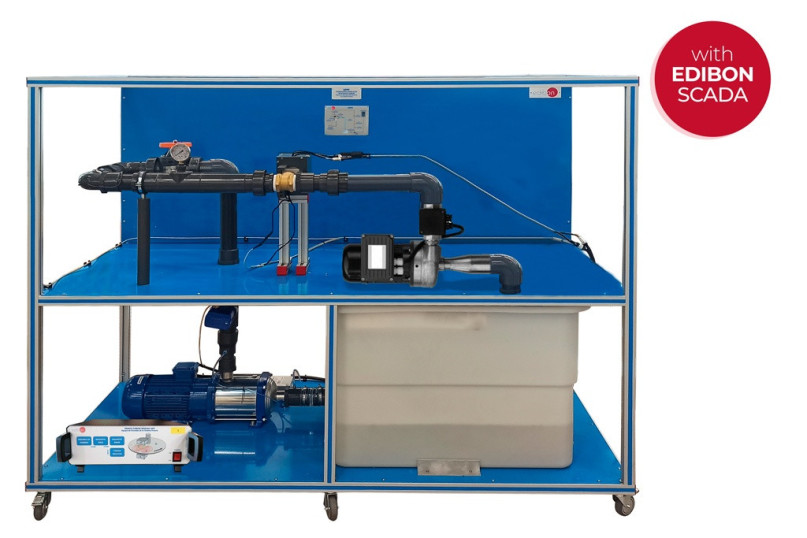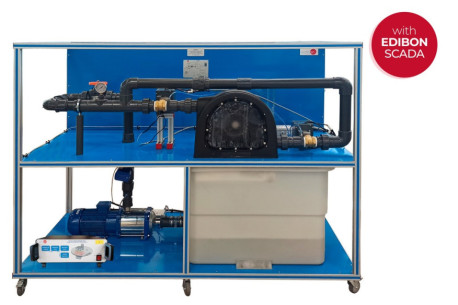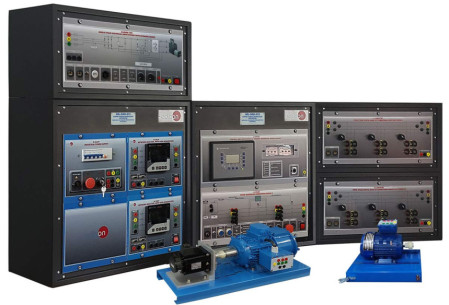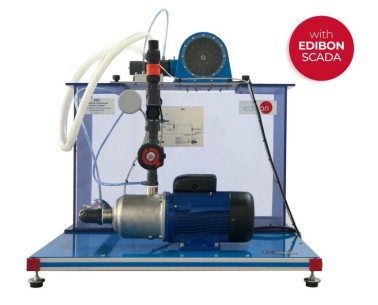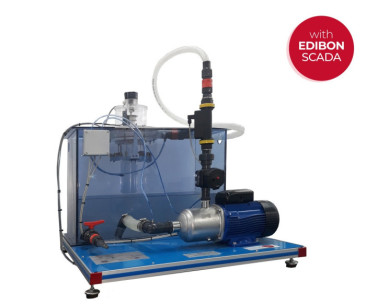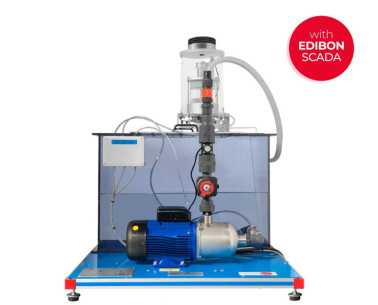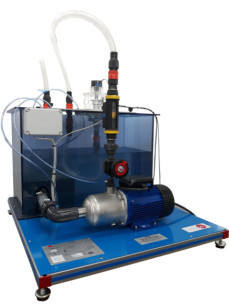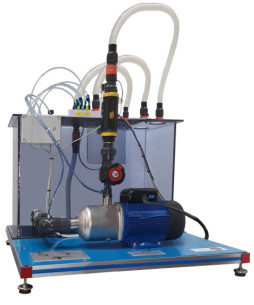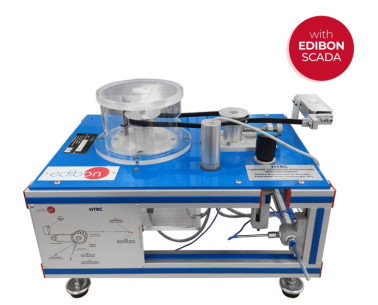EDIBON introduces the Computer Controlled Hydroelectric Power Plant with Francis Turbine, "HPPF," meticulously designed to explore the functionality of hydroelectric power plants based on Francis turbines.
This unit not only facilitates the investigation of hydroelectric processes but also allows for a detailed analysis of the mechanical attributes unique to Francis turbines.
From a mechanical standpoint, the "HPPF" unit boasts an aluminum and steel structure incorporating key components: a 0.75 kW Francis turbine with appropriate features, a water tank simulating a river, a powerful water pump for simulating controlled water flow. Manual control via the SCADA system or automatic control through an advanced controller, as outlined later in this catalog, provides flexibility. The "HPPF" unit integrates strategically positioned sensors measuring physical variables like flow, pressure and speed. These sensors empower users to visualize and analyze turbine and plant efficiencies and the impact of system variables on turbine performance.
Electrical exploration recommends acquiring the "N-REVT/1K" and "N-CAR19T/3C" resistive and capacitive loads, along with the "HPPF-CR" Control and Regulation Unit. This unit encompasses essential electrical elements for Francis turbine control. Analog measuring instruments such as voltmeter, wattmeter, and varimeter deliver insights into generator electrical parameters. The advanced controller automatically manages turbine adjustments concerning electrical power generated, acting as a multifunctional protective shield against over-frequency, over-voltage, over-current, and reverse power situations. An adjacent network analyzer facilitates measurement and visualization of electrical parameters injected into the real electrical network during synchronization. Additionally, the unit operates in island mode, supplying power to specified electrical loads.
Supervisory Control and Data Acquisition (SCADA) system inclusion ensures the comprehensive collection of electrical and mechanical parameters. SCADA serves as an indispensable tool for meticulous analysis, allowing graphical visualization of parameters. This capability enables a step-by-step understanding of system dynamics, such as the influence of variables on turbine mechanical power, performance variation based on adjustments, and its consequential impact on turbine torque.
In summary, the "HPPF" unit has the following features:
Computer Controlled Hydroelectric Power Plant with Francis Turbine (HPPF):
- Aluminum and steel structure.
- 0.75 kW Francis turbine with appropriate features.
- Water reservoir for simulating the flow of the river.
- Water pump for simulating controlled water flow.
- 0.75 kW electrical generator.
Acquiring the additional recommended elements HPPF-CR, N-REVT/1K, and N-CAR19T/3C:
- Analog measuring instruments: voltmeter, wattmeter, and varimeter.
- Advanced controller to govern turbine adjustments and provide generator and turbine protection.
- Network analyzer to measure and visualize generator's electrical parameters.
- Ability to operate in island mode, supplying power to electric loads.
- Electrical loads to simulate different energy consumptions.
These elements allow for a comprehensive study of both the mechanical and electrical aspects of hydroelectric power generation with Francis turbines. The "HPPF" unit offers an integrated tool for investigating and thoroughly understanding the operation of these systems, providing precise and detailed information through the SCADA system.
This Computer Controlled Unit is supplied with the EDIBON Computer Control System (SCADA), and includes: The unit itself + a Control Interface Box + a Data Acquisition Board + Computer Control, Data Acquisition and Data Management Software Packages, for controlling the process and all parameters involved in the process.
 クッキーの設定
クッキーの設定

